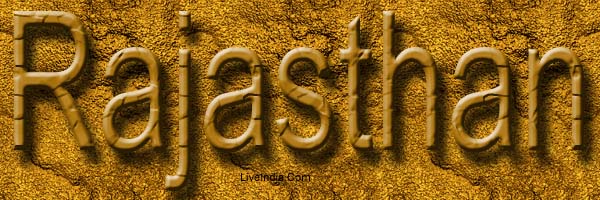 |
 |
 |
 |
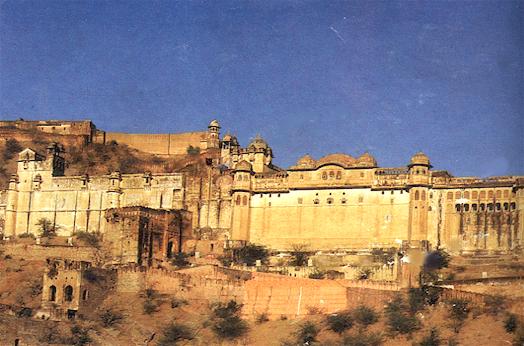 |
| AJMER | ALWAR | BHARATPUR | CHITAURGARH |
| JAIPUR | JAISELMER | JHALAWAR | JODHPUR |
| KOTA | MOUNT ABU | Pushkar | RANAKPUR |
| UDAIPUR | Hotels in India | Home | Gallery |

 |
| JAIPUR - SHEER
SYMPHONY IN PINK
The picturesque capital of Rajasthan, Jaipur is color washed pink-the color associated with hospitality in Rajput culture. Built in 1727 A.D. by Maharaja Sawai Jai Singh JI, Jaipur displays a remarkable harmony and architectural splendor. The ancient heart of the Pink City still beats in its fairy-tale palaces, rugged fortresses perched on barren hills and broad avenues that dot the entire city. The only planned city of its time, Jaipur is encircled by a formidable wall. 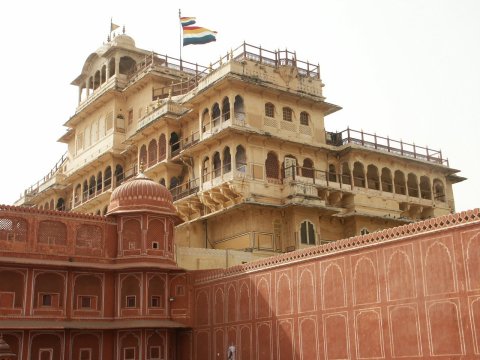 There is a timeless appeal to Jaipur’s colorful bazaars where one can shop for Rajasthani handlooms and trinkets. Beautifully laid out gardens and parks, attractive monuments and marvelous heritage hotels, once the residence of Maharaja’s are worth admiration. Not to mention the ambling camels and cheerful people in multi-hued costumes that make your trip to the pink city a memorable one. The City Palace: In the heart of the old city is former royal residence built in a blend of the Rajasthani and Mughal styles. The carved arches are supported by grey-white marble columns ornate with floral motifs in gold and colored stones. Two carved elephants in marble guard the entrance. The retainers whose families have served generations of rulers serve as guides. The palace houses a museum with a superb collection of Rajasthani costumes and armory of Mughals and Rajputs including swords of different shapes and sizes with chased handles, some of them inlaid with enamel and embellished with jewels and encased in magnificent scabbards. The palace also has an art gallery with an excellent collection of miniature paintings, carpets, royal paraphernalia and rare astronomical works in Arabic,Persian,Latin and Sanskrit, acquired by Sawai Jai Singh II to study astronomy in detail. Jantar Mantar: A stone observatory. Largest of Jai Singh’s five remarkable observatories. Its complex instruments,whose setting and shapes are scientifically designed, represent the high points of medieval Indian astronomy.The most striking of these are the Ram Yantras used for gauging altitudes. Hawa Mahal: Built in 1799 A.D. the Hawa Mahal or Palace of Winds is a major Rajput landmark. This five storey building along the main street of the old city is in pink splendor with semioctagonal and delicately honey combed sandstone windows. The monument was originally conceived with the aim of enabling ladies of the royal household to watch the everyday life and royal processions of the city. Govind Devji Temple: The most popular spireless temple of Jaipur dedicated to Lord Krishna. It is located in the central pavilion of the Jai Niwas Garden to the north of Chandra Mahal. The image of the patron deity-Govind Devji,originally installed in a temple of Vrindavan, was reinstalled here by Sawai Jai Singh II as his family deity. Swargasuli (Isar Lat): The highest tower dominating the skyline of the western side of the Tripolia Bazaar. It was built by Sawai Ishwari Singh in 1749 A.D. to commemorate a grand victory. Ram Niwas Bagh: A lush spacious garden with a zoo, an aviary, a greenhouse, a herbarlum , a museum and popular sport ground. It was built by Sawai Ram Singh II in the 1868 A.D. as a famine relief project. The Albert Hall-fine example of Indo Sarcenic style of architecture designed by Sir Swinton Jacob, was opened later with an exquisite collection of sculptures, paintings, decorative wares, natural history specimen, and Egyptian mummy and the celebrated Persian carpet. Recently, the Rabindra Manch with an auditorium, a modern art gallery and an open air theatre, has been added to promote cultural events. Dolls Museum (Time 12.00 hrs to 19.00 hrs.): Pretty dolls from various countries are on display in the compound of the school for deaf and dumb children,near the Police Memorial. BM Birla Planetarium (Time 12.00 hrs to 19.00 hrs.): The Planetarium offers unique audio-visual education and entertainment with its modern computerized projection system. For school groups concessions are available. Closed on last Wednesday of every month. Galtaji: An ancient pilgrimage centre, lying beyond the gardens amidst low hills.Temples ,pavilions and holy kunds (natural spring and reservoirs) along with lush landscape make it a delightful spot. The small temple of the Sun god, built by Diwan Kriparam on the top of the highest peak is visible from all parts of the city. Jain Temple: The exquisite jain temple on the Agra road has some of the most beautiful 19th century paintings in Jaipur style on its walls. Moti Doongari and Lakshmi Narayan Temple: Moti Doongari is a privately owned hilltop fort built like a scottish castle. The Ganesh Temple at the foot of the hill and the marvellous Lakshmi Narayan Temple built in marbles a few years back,are also noteworthy. Statue Circle: The full-length exquisitely carve statue of Swai Jai Singh in white marble in the centre of the circle was erected under the newly planned scheme area to pay homage to the founder of Jaipur. OTHERS: Beautiful memorials to the queens,Maharani-ki-chattri are near the Ramgarh road crossing on the Amber Raod. The Island Palace,Jal Mahal built by Sawai Jai SinghI, is a fascinating spot at the centre of the Man Sagar Lake. The Kanak Vrindavan: Complex of fine temples and gardens has been recently renovated to their pristine perfection. To the west of this road is the royal crematorium at Gaitore in a narrow valley with some spectacular cenotaphs of all the Jaipur rulers except Swai Ishwari Singh who was cremated outside the Jai Niwas Garden. Most imposing is the ‘chattri’ of Sawai Jai Singh II with the intricate carvings and a graceful shape. Ghat ki Guni: Beautifully landscaped gardens, laid out in the 18th and 19th century by king and courtiers dot the narrow gorge in the south eastern corner of the walled city, along the road to Agra. Sisodia Rani Garden has tiered multilevel gardens with fountains, water channel and painted pavilions and suites of living rooms. Amongst others, Vidhyadhar-ka-Bagh is the best preserved one, with shady trees, flowing water, an open pavilion. It was built by the planner of the city,Vidhyadhar. Amer: Former capital of the Kachhwaha rulers of the old state of Dhundhar for seven centuries. Very little of the early structures survive now. Jaipur Hotels, Jaisalmer Hotels, Jodhpur Hotels, Udaipur Hotels. Amer Palace and Shila Mata
Temple: A beautiful complex of palaces, halls,pavilions,gardens and temples
built by Raja Man Singh,Mirza Raja Jai Singh and Sawai Jai Singh over a
period of about two centuries still stand in magnificent state. The palace
complex emerges dramatically from the placid waters of the Maotha Lake
and is approachable only through a steep path. Tourists often ride on the
elephant bak to the Singh pol and th Jaleb Chowk. Two flights of stairs
rise from on end of the chowk, one leading to the Shila Mata Temple and
other to the palace complex. The image of the patron of goddess,worshipped
by thousands of deovtees, was brought from Jessore in East Bengal (now
in Bangladesh) by Raja Man Singh, to be installed here.
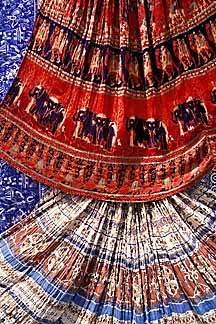 Jaigarh: One of the few military structures of medieval India, retaining its ancient splendour in palaces,gardens , reservoirs, a granary, an armoury, a well planned cannon foundary, several temples, a tall tower and a giant mounted cannon-the Jai Ban,one of the largest in the country are preserved here. The extensive parkotas (wallls), watch tower and gateways of Jaigarh dominate the western skyline. Nahargarh: A sentinerl to the Pink City is Nahargarh Fort, situtated beyond the hills of Jaigarh. Although much of it is in ruins, the lvoerly building added by Sawai Ram Singh II and Sawai Madho Singh II provides interest to the fort. EXCURSIONS Sanganer (12 km): Located on the Tonk road,. In addition to its ruined palaces, Sanganer has exquisitely carved Jain temples. The town is entered through the ruins of two tripolias (Triple gateways) The town is an important centre for crafts industry and produces some of the finest hand printed textiles from units of block and screen printers. This textile is popular all over the country and abroad. Bagru (35 km) : On the Ajmer Raod, the ground level fort is still in good shape. It is noted for its hand printed handloom industry using simple techniques. The designs of these handloom are less complicated and are in earth hues. Ramgarh Lake (32 km. North east): A huge artificial lake created by constructing a high bund amidst tree covered hills. White the temple of Jamwa Mata and the ruins of the old fort are some of its antiquities, its beautiful landscape,especially during monsoons,makes it an idyllic picnic spot. Samod (40 km, north west): The beautiful Samode Palace, has been rebuilt and renovated and provides a fine example of the Rajput haveli architecture and is an ideal spot for outings. Bairath (86 km on the Shahpura-Alwar
Road): An important historical place with the excavated remains of a circular
Buddhist temple-unique in Rajasthan and the earliest known temple in India.
Bairath also has relics of the Mauryan,Mughal and Rajput periods.
Abhaneri (128 km north east off the Agra road near Bandikui): A famous 7th -8th century A.D. temple of Harshad Mata and the step-well known as Chanda Baodi are of interest. Two jain temples are also present, which were built at a later period. Sambhar (94 km.west): The largest inland salt lake of India known for the holy Devayani Tank, the palace and the Naliasar nearby. Jaisinghpura Khor (12 km off the Amer Raod): One of the settlement of the Meena tribe, it has a formidable fort, a jain temple and a step-well amid lush surroundings. Madhogarh-Tunga (40 km. On the Bassi-Lalsot Agra Road): Tunga was witness to a historic battle fought between the Jaipur forces and Marathas. The fort is nestled amidst beautiful mango orchards. 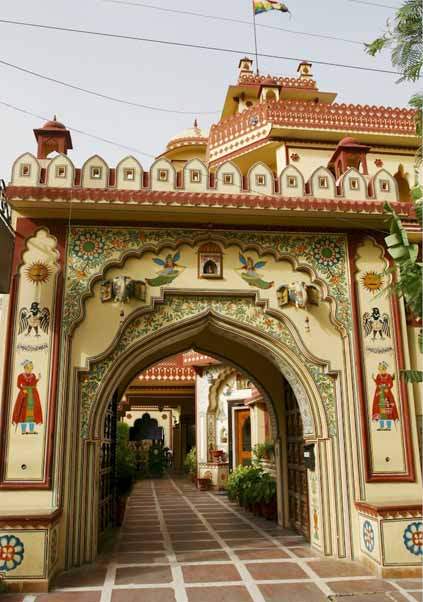 GETTING TO JAIPUR - Jaipur
is 262 kms from Delhi and is well connected by road, rail and air. A big
fleet of deluxe and air conditioned buses is operated by the Rajasthan
Roadways between Delhi and Jaipur. A special luxury train, the Palace on
Wheels starts from Delhi on a round trip of Rajasthan.
GENERAL INFORMATION Area :Jaipur City (Municipal
limits 64.75 sq. km. ,Pink City 9.8 sq. km.)
List
Of Hotels in Rajasthan
Places to Visit
|
|
|
|
|
|
Rajasthan News |
 |
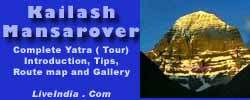 |
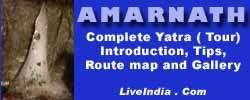 |
 |
 |

Miss World - 2000 Priyanka Chopra |
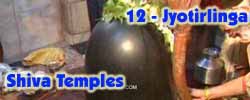 |
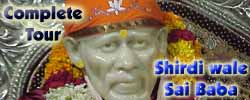 |
 |
 |
 |
 |
 |
 |
 |
| Privacy Policy for LiveIndia.Com |
|
( The Trade Marks Act, 1999, No. 01403083. User Since : 01/04/1997 ) All rights reserved. No part of this publication and other sites of under liveindia.com may be transmitted or reproduced in any form or by any means without prior permission from the publisher Live India Internet Services or Mr.Rajesh Chopra, L.C.Premium Cables, 1826, Amar Nath 2nd Building, Bhagirath Palace Delhi - 110006, India. Liveindia.com or Mr.Rajesh Chopra is not responsible for any wrong information under live india's sites, For confirmation of any information it is recommended that you reconfirm it from your end. |